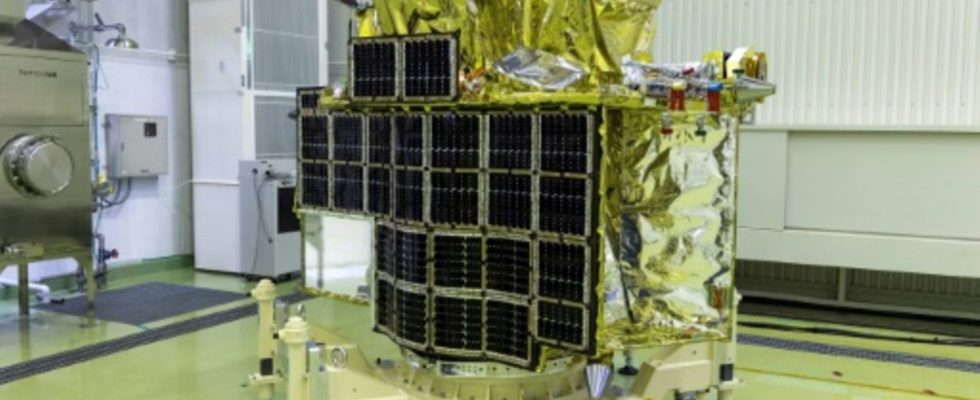Japan’s Slim space probe landed on the moon – solar cells do not produce electricity
Slim (Smart Lander for Investigating Moon) in the assembly hall
© AFP
Japan has become the fifth nation in the world to land on the moon. The Japanese space agency Jaxa confirmed the landing of the Slim space probe on Earth’s satellite on Saturday (local time). Communication with the probe had been established, but its solar cells were not producing any electricity, explained Jaxa.
Slim is powered by on-board batteries, said authority representative Hitoshi Kuninaka. “The data obtained during the landing will be stored in the spacecraft, and we are currently working to maximize the scientific results by sending the data back to Earth,” Kuninaka said.
The authority had previously announced during a live broadcast that Slim had “apparently” landed on the moon. “On the screen, it looks like Slim landed on the moon,” said Jaxa employee Shin Toriumi. The status is still under review, he added.
A little later, Jaxa confirmed that the space shuttle, which had begun its landing approach around midnight (local time; 4:00 p.m. CET), touched down there at 00:20 after checking the surface. The name Slim is an abbreviation for “Smart Lander for Investigating Moon”.
It was Japan’s third attempt at a moon landing after two failed missions. So far, only the USA, the Soviet Union, China and India have succeeded in landing on the moon.
If everything went according to plan, the 2.40 meter long and 1.70 meter wide spacecraft will have landed in Shioli Crater, which is less than 300 meters in diameter. The scientists assume that the lunar mantle, the barely explored layer beneath the crust, is accessible from the surface.
“The rocks exposed here are crucial for studying the origins of the moon and the Earth,” Tomokatsu Morota, a professor at the University of Tokyo who specializes in lunar research, told AFP.
According to Morota, it could also provide information about water resources on the moon, which would be important for the possible use of the moon as a stopover on the way to Mars. “The possibility of commercial use of the moon depends on whether there is water at the poles,” Morota said.
To study the lunar surface, Slim has a spherical probe on board that is barely larger than a tennis ball and as heavy as a large potato. To get around on the moon, the metal ball equipped with two cameras can unfold like a children’s action figure and roll through the moon dust on two wheels.
The Japanese space agency Jaxa developed the SORA-Q probe together with toy manufacturer Takara Tomy, Sony and Doshisha University in Kyoto. A toy version of the ball is available on Earth for 21,190 yen (around 130 euros).
Japan’s successful precision landing on the moon would be a “big deal”, Emily Brunsden, lecturer in astrophysics and director of the University of York’s Astrocampus, said before the landing. It represents a technological advance that makes it possible to focus missions on much more specific research questions. There is usually only one attempt and even “the smallest mistake” can lead to the failure of a mission.
The Japanese space agency Jaxa had already achieved a precision landing on an asteroid, but the challenge is greater on the moon, where gravity is stronger.
German ESA astronaut Matthias Maurer congratulated Japan on its “successful moon landing” on X, formerly Twitter.

